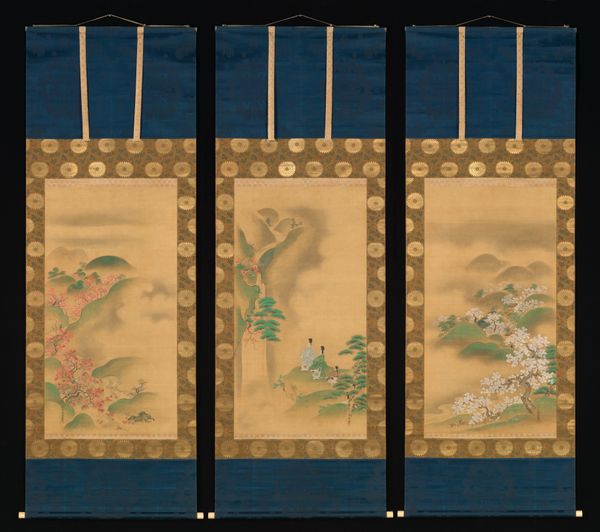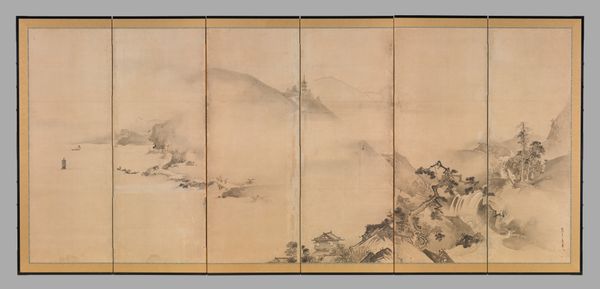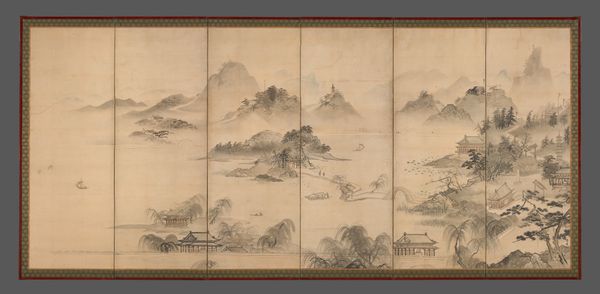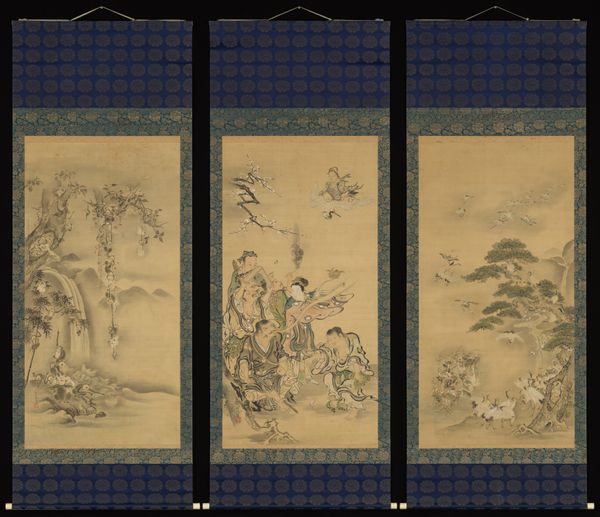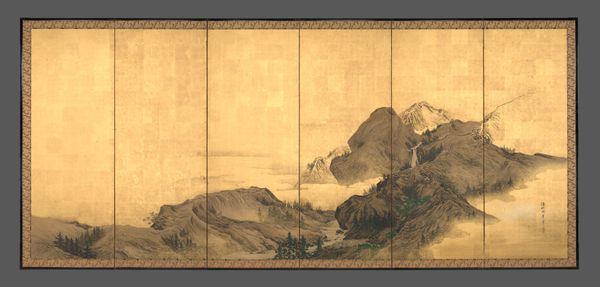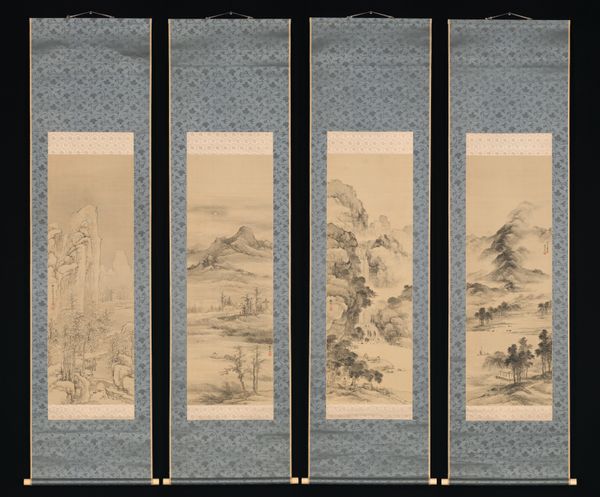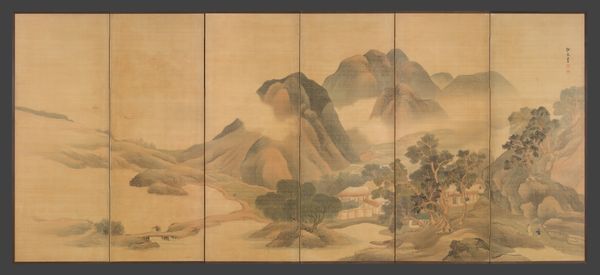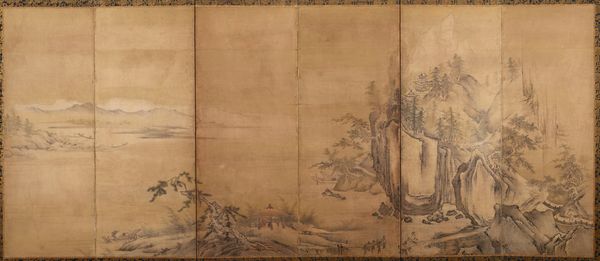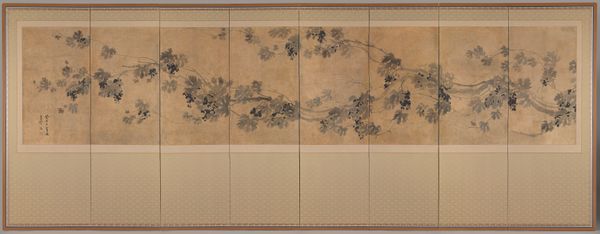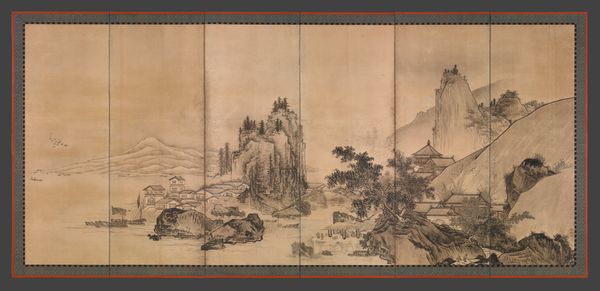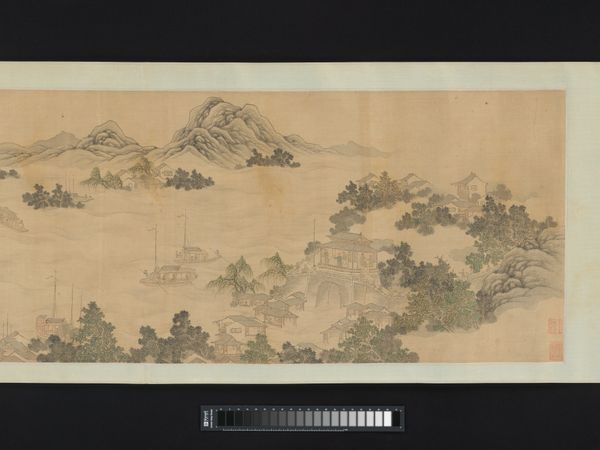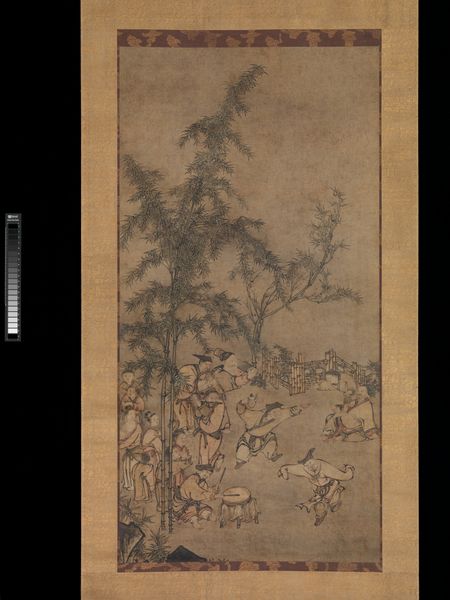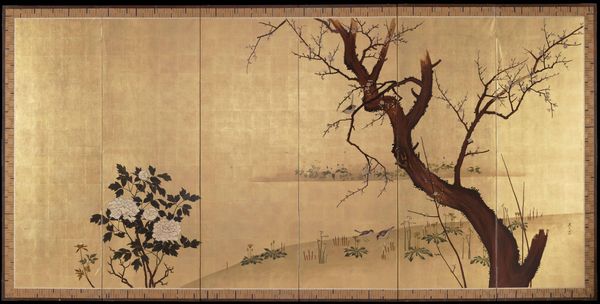
painting, paper, ink
#
painting
#
asian-art
#
landscape
#
ukiyo-e
#
paper
#
ink
Dimensions: Overall (each panel): 86 x 35 in. (218.4 x 88.9 cm)
Copyright: Public Domain
Curator: What immediately strikes you about this piece, Editor? It's entitled "Fishing Village" and hails from the 19th century, made with ink and color on paper. Editor: It's beautiful, of course. But also somewhat melancholic. The hazy landscape and muted color palette create a dreamlike quality. The composition seems very intentional; the placement of each boat, each house feels considered, contributing to a balanced but perhaps somewhat static overall design. Curator: That sense of melancholy might stem from the socio-economic realities of 19th-century fishing communities. These were often places of hardship, and artwork depicting them, while seemingly picturesque, served to highlight the laborers working, often against harsh circumstances, to maintain their way of life. The labor involved in obtaining the inks and carefully mounting this paper panel screen tells us something of the artist’s access to resources as well. Editor: Interesting point, the labor! While I acknowledge the social elements, I'm more drawn to how the artist uses line and space to define form. The boats, for example, are rendered with incredible economy of line. And the vast emptiness of the water, or the fog if that's what it's meant to suggest, becomes a powerful element in its own right, lending the work this feeling of atmospheric perspective. Curator: Consider that ukiyo-e works like this became popular consumer items that reflect the lives and occupations of ordinary people—albeit often idealized and filtered through an aesthetic lens. Its wide dispersal indicates shifts in artistic patronage and the burgeoning commodification of images, providing greater visibility and access to such depictions in 19th century Japan. Editor: Yes, that distribution informs access and commodification—yet the image also captivates in terms of technique. The artist’s application of diluted inks gives such a nuanced range of tonal variations—was this due to a specific method, maybe linked to production scale, affecting aesthetic properties? Curator: Undoubtedly. It is clear how this approach shaped both production and affect! I'm struck by how our differing focuses – your deep formal observations, and my interest in cultural materials– open distinct interpretive pathways. Editor: Absolutely. And those pathways converge ultimately, hopefully enhancing the viewer's experience, illuminating aspects we might each have initially missed.
Comments
No comments
Be the first to comment and join the conversation on the ultimate creative platform.
